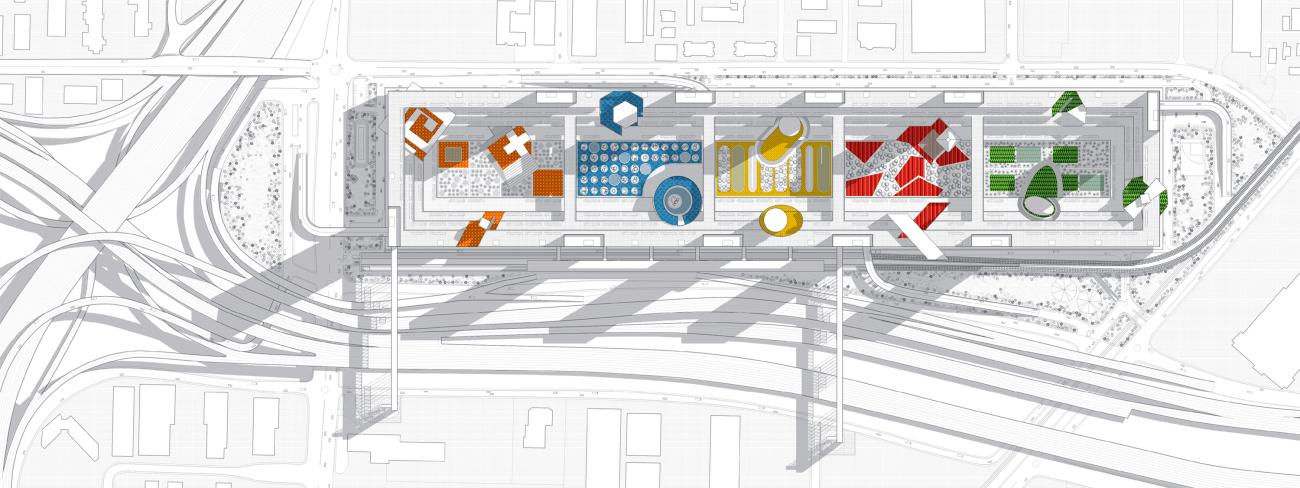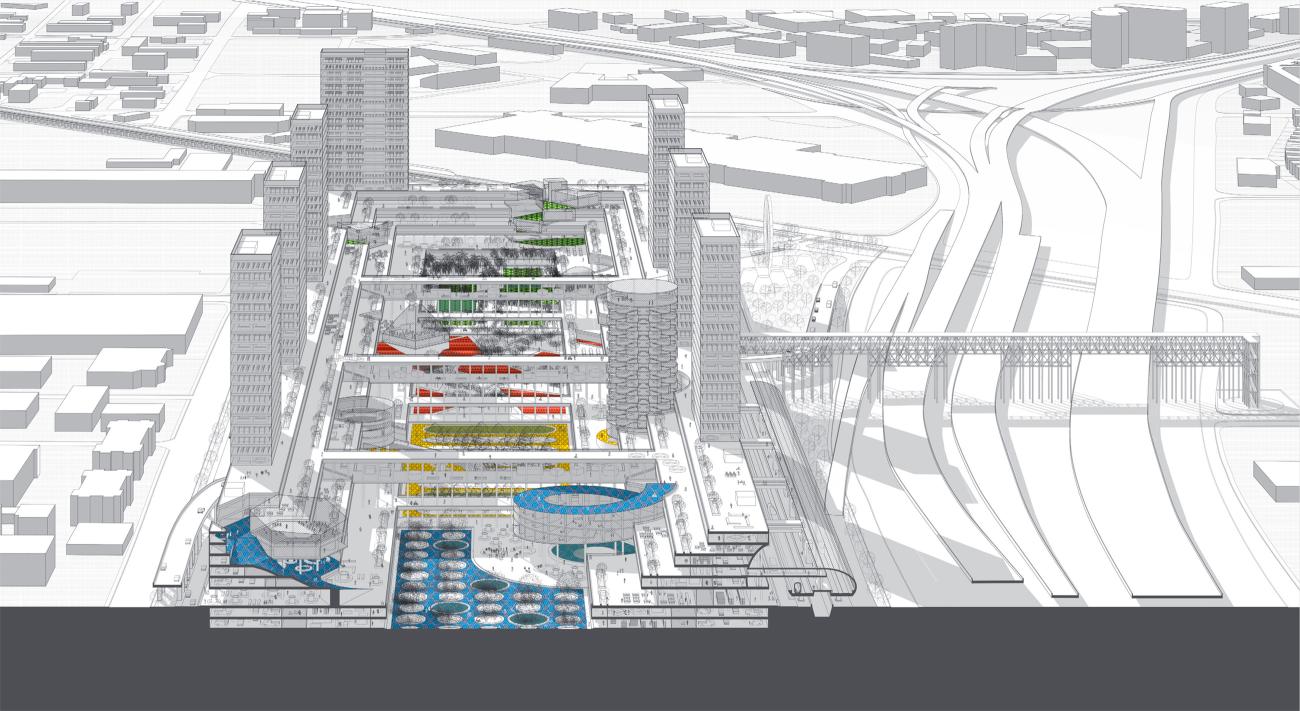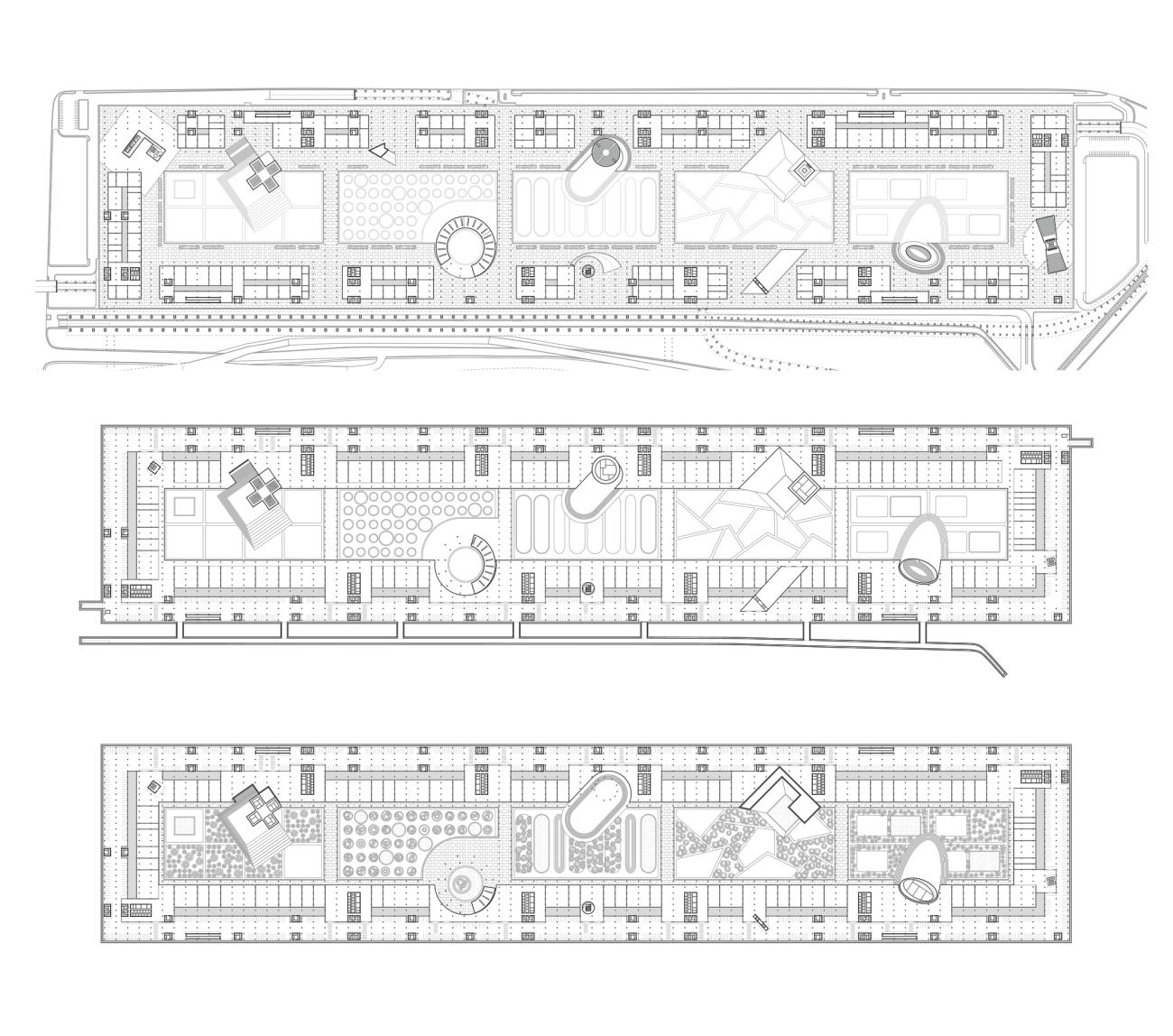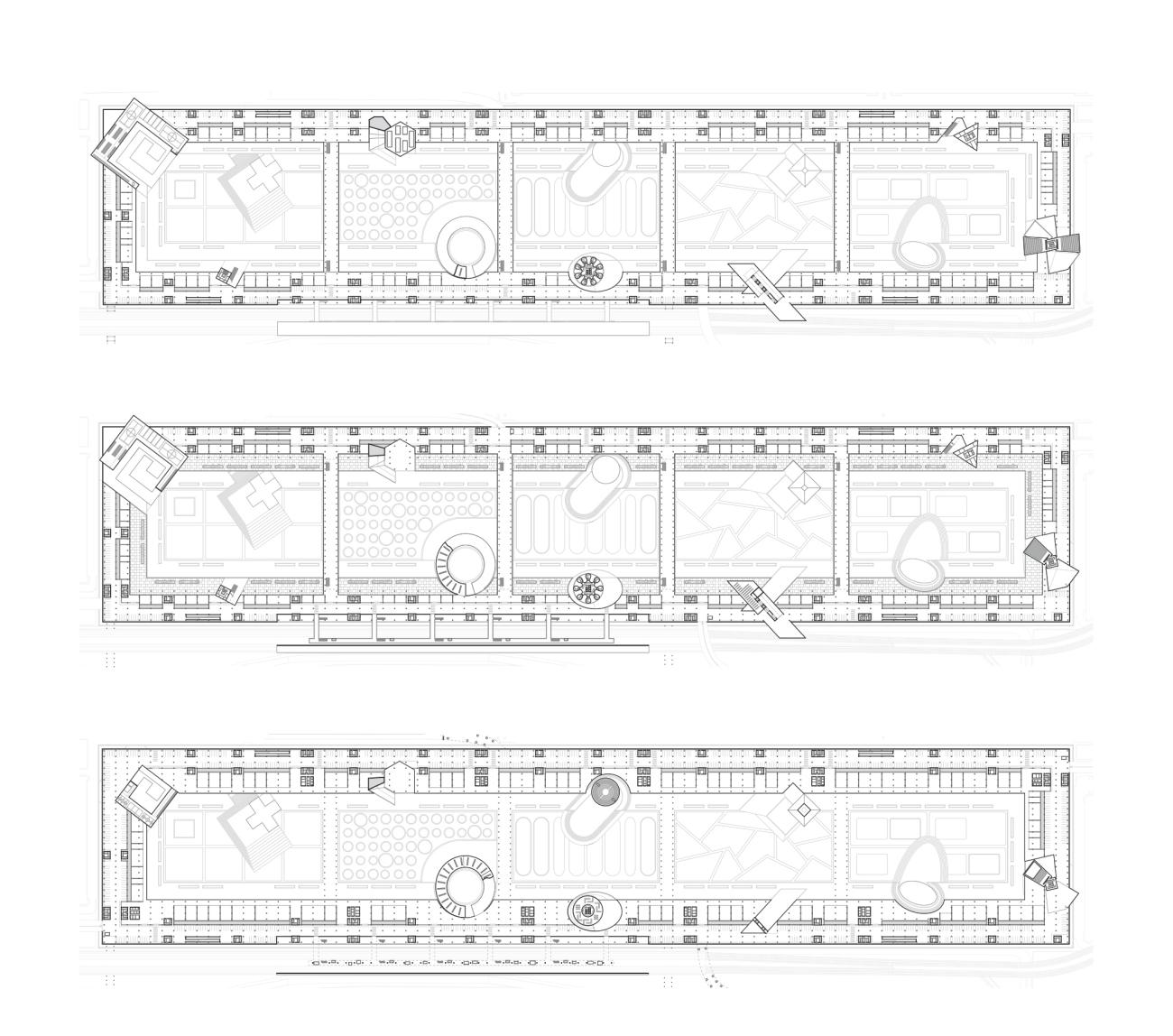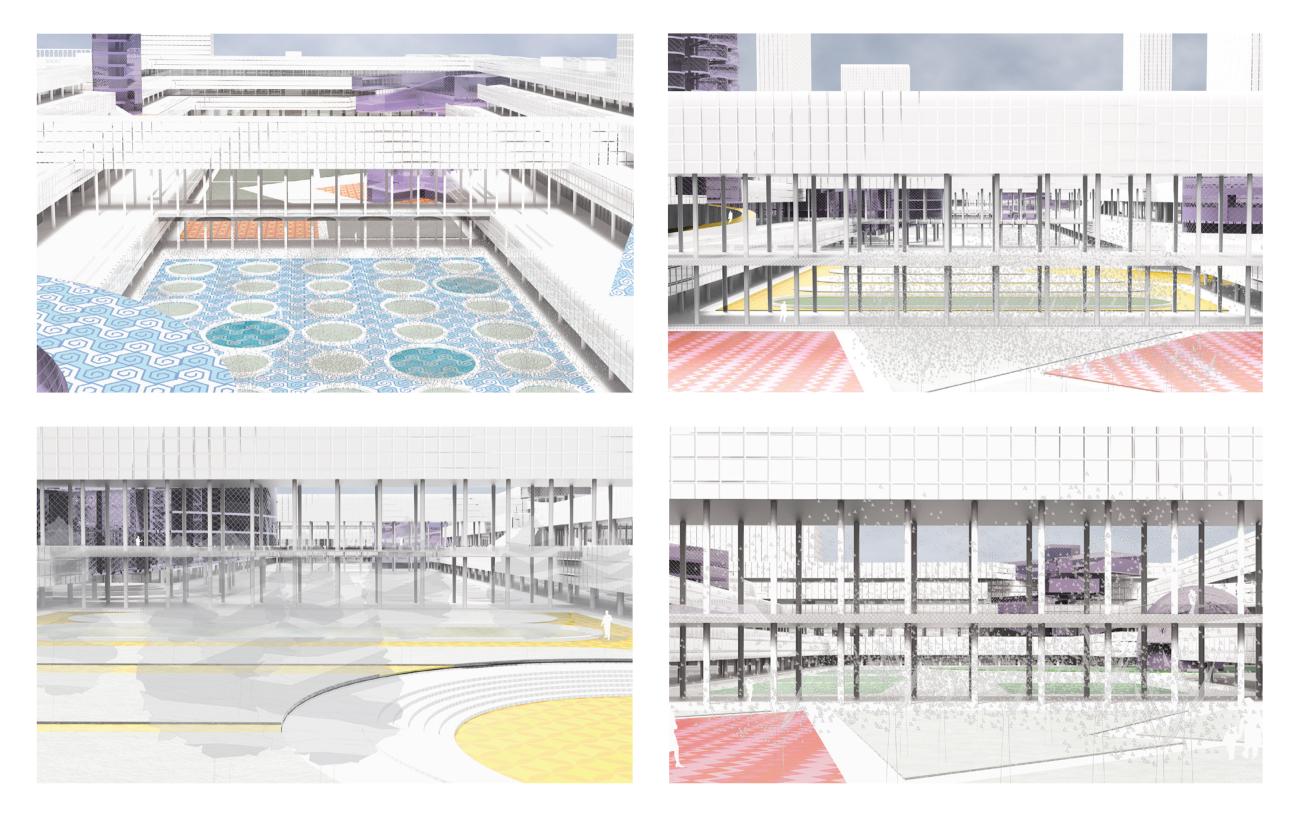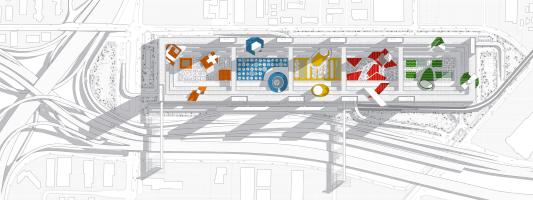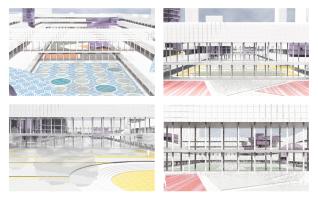Srijaya Simhadri
2017
Collective urban spaces have historically been civic, cultural (i.e. religious and leisure) and commercial in nature. These urban programs benefited from their physical proximity. An intimate coexistence of the 3 Cs constituted the traditional city center. This formula for social and economic sustenance is well tested. In the present day, segregated zoning and a shift toward the privatization of public space has changed the nature of collective urban space. Civic, cultural, and commercial institutions have been isolated. The three types of institution no longer benefit from their physical proximity. This result of the separation of the 3 Cs is the fragmentation and effective disintegration of collective urban space. My thesis asserts the formal recognition of collective urban space in the disintegrated urban context of the megalopolis. The project is sited in Houston, an exemplar of contemporary polycentric urbanism where the influence of religious institutions still has the capacity to choreograph public life. The design takes the future nodal interchange between the freeway system and proposed site for the new high speed rail station connecting Houston to Dallas as a one-time opportunity for densification and to establish a new kind of collective urban space. Integrated with road and rail transportation systems, the thesis conceives an urban nucleus for the city and the region. The project provides an autonomous urban center that combines the 3 Cs—civic, cultural, and commercial—together, without letting one program or institution dominate.


